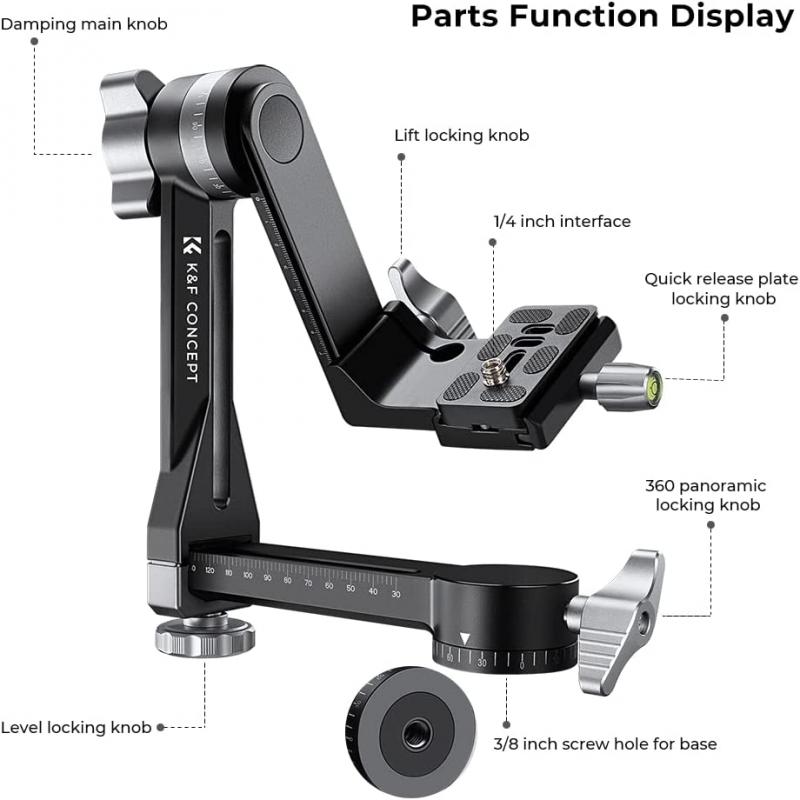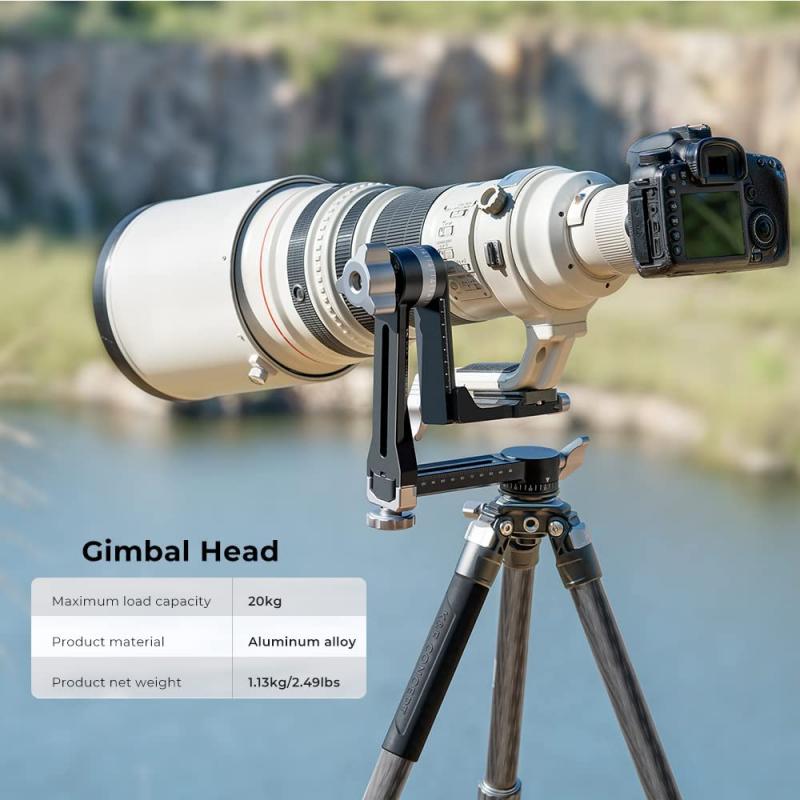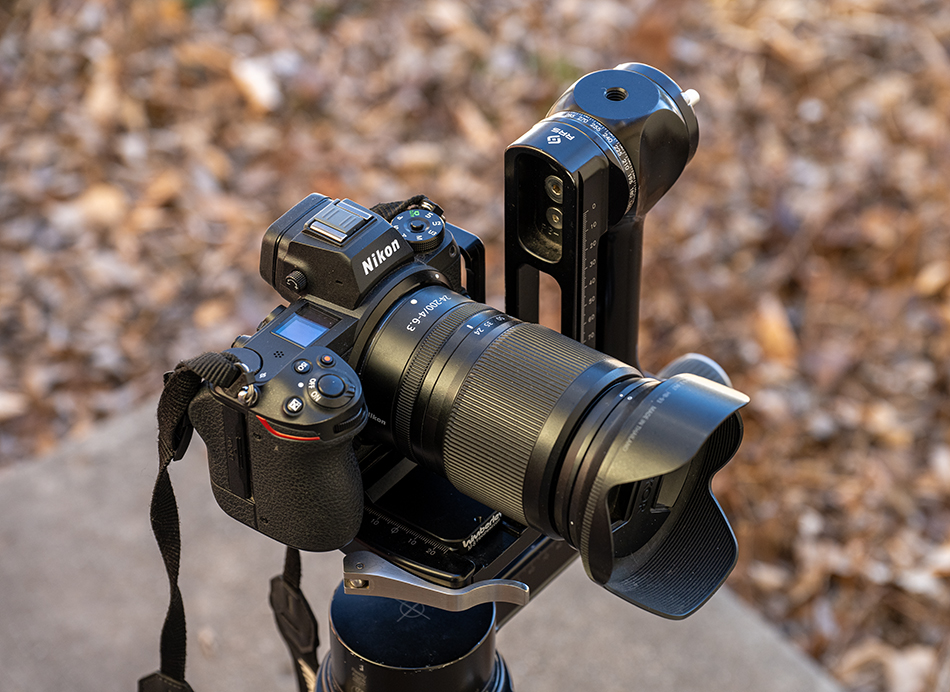Attaching a gimbal head to a tripod is straightforward. Place the gimbal head on the tripod’s mounting plate.
Then, secure it tightly using the knob. A gimbal head offers smooth movement for cameras. It’s popular among photographers and videographers. The setup process is important for stability. A proper setup ensures balance and ease of use. Gimbal heads are ideal for wildlife and sports photography.
They allow tracking fast-moving subjects effortlessly. By mastering the attachment, you enhance your shooting experience. It’s essential for capturing clear and dynamic shots. This guide will help you attach your gimbal head correctly. You’ll learn tips for a secure connection. Enjoy the flexibility and precision a gimbal head provides. Dive into the world of fluid and stable camera movement.
Table of Contents
Choosing The Right Gimbal Head
Gimbal heads come in different shapes and sizes. There are heavy-duty gimbal heads for big cameras. These are strong and hold heavy lenses well. Lightweight gimbal heads are easy to carry. They are great for travel photographers. Some gimbal heads are compact. They fit in small bags easily. Photographers need to choose based on their camera weight. Think about your needs and pick wisely.
Look for smooth movement in a gimbal head. This helps in getting clear shots. Sturdy construction is crucial. It ensures the head lasts longer. Check the load capacity of the gimbal head. It should support your camera and lens. Ease of adjustment is important. You should be able to move the camera quickly. Compatibility with your tripod is essential. Always check if they fit together. Consider the price. It should fit your budget.

Credit: www.kentfaith.co.uk
Selecting A Compatible Tripod
A tripod must support your camera and gimbal head. It should have a strong weight capacity. Check the tripod’s weight limit before buying. It should be greater than your camera’s weight. This ensures stability. A strong tripod keeps your equipment safe.
The head mount should fit the gimbal head. Check the mount type. Most gimbal heads use a standard screw size. Match this with your tripod. Some tripods have an adapter. This helps connect different mounts. Always ensure a secure fit. It prevents accidents and damage. Proper compatibility is key for safe use.
Preparing Your Equipment
Start with your gimbal head and tripod ready. Check for all parts. You need a screwdriver and a wrench. Ensure you have the correct screws. Keep them handy. Double-check your tools. Everything should be in reach. This saves time.
Set up your tripod on flat ground. This ensures stability. Make sure legs are firm. They should not wobble. Tighten any loose screws. This prevents shaking. Check the tripod head. It should be steady. A stable base is key for good photos.
Attaching The Gimbal Head
Place the base plate on the tripod. Make sure it is flat. Align the holes of the plate and the tripod. Insert the screws through the holes. Use a screwdriver to tighten the screws. Ensure the base plate is stable. It should not wobble or move.
Position the gimbal head on the base plate. Line up the head with the plate holes. Tighten the screws to secure the head. Use a wrench for better grip. Check if the head is steady. It must hold your camera firmly. Adjust the knobs for smooth movement. The camera should move easily. Test the setup by rotating the head. It should turn without friction.
Balancing The Setup
Secure the gimbal head to your tripod for stable camera shots. Ensure the tripod plate fits snugly under the gimbal base. Tighten all screws to prevent wobbling during use.
Adjusting The Center Of Gravity
Start by placing the tripod on a flat surface. Attach the gimbal head securely to the tripod. Next, mount your camera on the gimbal head. The center of gravity is vital for balance. Slide your camera forward or backward. You need to find the point where it doesn’t tip over. This is the balance point. Tighten the screws gently to hold it in place.
Fine-tuning The Balance
After finding the center, you may need to fine-tune. Tilt the camera up and down. Check if it stays still. If not, adjust the camera again. Move it slightly forward or backward. Continue until the camera stays in any position. This ensures smoother movement. Proper balance makes it easier to take photos. Enjoy capturing with your balanced setup!
Testing The Movement
Attaching a gimbal head to a tripod begins with securing the base plate firmly. Slide the gimbal head onto the plate, ensuring it clicks into place. Tighten all knobs to prevent wobbling while capturing smooth movements.
Checking Smooth Rotation
Rotate the gimbal head slowly. Watch its movement carefully. It should turn smoothly without jerking. If it stops or sticks, adjust the tension. Use the knobs on the gimbal head. They help control the movement. Tighten or loosen them as needed. Check rotation again after adjusting.
Ensuring Stability And Control
Make sure the gimbal head is stable. It should not wobble. Test its control by moving it gently. It should respond well to your touch. If it feels loose, check the screws. Tighten them if needed. A stable gimbal head helps in steady shots. Balance is key for a good gimbal head. It should hold the camera securely.
Troubleshooting Common Issues
Attaching a gimbal head to a tripod can be tricky. Start by ensuring the tripod is stable. Then, align the gimbal head with the tripod mount. Tighten securely to avoid any wobbling. This setup helps in achieving smooth and balanced camera movements.
Dealing With Loose Connections
Loose connections can cause the gimbal head to wobble. Check the tightness of screws. Use the right tools to ensure a firm hold. Inspect the mounting plate regularly for wear. Replace any worn parts promptly. This helps maintain stability.
Addressing Balance Problems
Balance problems affect the tripod’s performance. Adjust the gimbal’s tilt and rotation. Ensure the camera is centered on the plate. Use counterweights if necessary. This can improve stability and motion. Regular checks help keep the setup balanced.

Credit: www.kentfaith.co.uk
Maintenance Tips
Securely attach a gimbal head to a tripod by aligning the base plate with the tripod’s mounting screw. Tighten the screw to ensure stability. Check for smooth movement to capture steady shots.
Cleaning The Gimbal Head
Dust and dirt can damage the gimbal head. Use a soft, dry cloth to clean it. Avoid using water or harsh chemicals. These can harm the materials. Check for any visible dirt before each use. A clean gimbal head works better. It also lasts longer.
Regular Check-ups For Longevity
Check the gimbal head screws often. Tighten them if they are loose. This keeps it stable. Inspect for any signs of wear. Replace worn parts quickly. Smooth movements mean parts are in good shape. Regular care extends its life. A well-maintained gimbal head makes photography fun.

Credit: www.tombolphoto.com
Frequently Asked Questions
How Do You Attach A Gimbal Head To A Tripod?
Secure the gimbal head onto the tripod by aligning the base with the tripod’s mounting plate. Tighten the screw to ensure stability. Ensure the gimbal head is firmly attached before mounting your camera. Double-check all connections for safety and balance before use.
Can A Gimbal Be Attached To A Tripod?
Yes, a gimbal can be attached to a tripod. Use a compatible mounting plate or adapter. Ensure secure attachment for stability. This setup enhances video quality by providing smooth, steady shots. It’s ideal for filmmakers and vloggers seeking professional results.
Always verify the compatibility of your gimbal and tripod.
How Do You Attach A Tripod Head?
To attach a tripod head, align the head’s base with the tripod mount. Securely screw it clockwise until tight. Ensure the head is stable and check for any wobbling. Adjust the head’s position by loosening the knobs and tightening them after positioning.
Proper attachment ensures smooth camera movements.
How To Attach Camera Slider To Tripod?
Secure the camera slider to the tripod using a compatible mounting plate. Ensure both are tightly fastened. Adjust the slider’s position for stability. Verify all connections are secure before use.
Conclusion
Attaching a gimbal head to your tripod is simple. Follow the steps carefully. Start by securing the base. Ensure it fits snugly. Tighten the screws gently. Check for any wobbles. Adjust the balance for smooth movement. Practice using the gimbal head.
Get comfortable with its features. Enjoy capturing dynamic shots. Remember, patience is key. Regularly inspect your equipment. Keep it well-maintained. This ensures long-lasting performance. Now you’re ready to explore new angles. Capture stunning wildlife and sports photos. Make your photography experience more enjoyable.
Always strive for the perfect shot. Happy shooting!